#modding resource
Explore tagged Tumblr posts
Text
Tool: Easy AMM Poses (v1.00)


Hi, here's my new tool aimed at modders creating pose packs.
It's a fully automated, "Photomode to AMM" convertor.
Drag your animation file(s) and it'll build all the AMM equivalent files (lua/workspot/ent and so on).
By the end, you'll get a complete pose pack with zero effort on your part.
Demo video (poses by @elfjpeg)
Download NexusMods
#easy amm poses#cyberpunk2077#cyberpunk2077 modding#cyberpunk resource#modding resource#community tool
37 notes
·
View notes
Text
▶ Hair Porting - Resources Files ✂
Hair has been my lil modding fixation latetly and I wanted to make the workflow less chaotic and more fun for myself! I Decided to share some of these resources with y'all to hopefully help those who might want to jump in ✌
🔸Mesh : HAIR_MeshData_fullCC_hp_cap.mesh
This mesh is NOT to be used as a container for imports, simply as a "data mule"! Copy and Paste the materials, names and appearance list to your own meshes, and don't forget to custom path your own textures in there :3
Contains all of the 35 CC colors, both Caps and Hair Profiles, for a total of 70 entries
No external materials; everything is un-embedded and in the localMaterialBuffer
No .mis involved; every materials directly calls for the correct .mt and has all the necessary values directly in the entries
All appearances and materials are alphabetically sorted 🤠
🔸PSD files : Textures Converters
PSD_cap_converter & PSD_cards_converter
Simply drop the original's hair model textures/maps on the destined layer, in each group, to convert them
Multiple adjustements layers are already set up for you to mess with


Happy porting 🧡

#Cyberpunk 2077#Modding Resource#CP77 Resource#CHOP CHOP ✂ I'll be updating my masc hairs soon-ish too#noticed a lot of them (if not all) were missing colors because of the hair I used as a data source#got annoyed and went fuck it I'm making my own ghfhg
18 notes
·
View notes
Text

25+ MUST-HAVE Mods for STUNNING Graphics and Realism in The Sims 4
Hi everyone! Here is a list of 25+ must-have mods for better graphics and realism in The Sims 4. I showcased each of the mods mentioned below. You can watch it here.♡
GShade
Reshade
GShade Presets
No Zzz by Krys29
No Blu by Luumia
No Glo by Luumia
Main Menu Overrides
Sunblind by Softerhaze
Tram Override by Vyxated
Hidden Highlight by Foggity
Font Override by Sulsulduck
Billboard Override by Kekeyw
Brutal Brawler by Cezpid/Zulf
Boat Override by Largetaytertots
No Blur In Distance by MizoreYukii
Map Replacements by Mamallama
Missing Plumbob by Mintvalentine
Fluffy Clouds Replacement by Miiko
San Sequoia Bridge Override by Alerion
Lighthouse Override by Largetaytertots
Celeb Social Faint Animation by NV Games
Motive Fail Energy Animation by NV Games
Lovestruck Taxi Override by Largetaytertots
Serene Main Menu Override by BougieChloe
Map Replacements by 20th Century Plumbob
Better In Game Lighting by Northern Siberia Winds
Remove Dust/Cloud When Sims Fight by Cezpid/Zulf
Even Better In-Game Lighting by Northern Siberia Winds
Thank you to the creators! ♡
#the sims 4#ts4#sims 4#the sims 4 mods#sims 4 mods#the sims 4 custom content#sims 4 custom content#ts4 custom content#ts4 mods#sims 4 overrides#the sims 4 overrides#ts4 overrides#ts4 default replacement#ts4 resources#sims 4 cc#the sims mods#simblr#the sims community#bougiechloe#sims 4 gameplay#sims 4 youtube#sims 4 screenshots#ts4 simblr#sims 4 gshade#sims 4 reshade#sims 4 animations#ts4 animations#sims 4 lighting#sims 4 override#ts4 override
3K notes
·
View notes
Text
Where to Start Your Research When Writing a Disabled Character
[large text: Where to Start Your Research When Writing a Disabled Character]
So you have decided that you want to make a disabled character! Awesome. But what's next? What information should you decide on at the early phrase of making the character?
This post will only talk about the disability part of the character creation process. Obviously, a disabled character needs a personality, interests, and backstory as every other one. But by including their disability early in the process, you can actually get it to have a deeper effect on the character - disability shouldn't be their whole life, but it should impact it. That's what disabilities do.
If you don't know what disability you would want to give them in the first place;
[large text: If you don't know what disability you would want to give them in the first place;]
Start broad. Is it sensory, mobility related, cognitive, developmental, autoimmune, neurodegenerative; maybe multiple of these, or maybe something else completely? Pick one and see what disabilities it encompasses; see if anything works for your character. Or...
If you have a specific symptom or aid in mind, see what could cause them. Don't assume or guess; not every wheelchair user is vaguely paralyzed below the waist with no other symptoms, not everyone with extensive scarring got it via physical trauma. Or...
Consider which disabilities are common in real life. Cerebral palsy, muscular dystrophy, stroke, cataracts, diabetes, intellectual disability, neuropathy, multiple sclerosis, epilepsy, thyroid disorders, autism, dwarfism, arthritis, cancers, brain damage, just to name a few.
Decide what specific type of condition they will have. If you're thinking about them having albinism, will it be ocular, oculocutaneous, or one of the rare syndrome-types? If you want to give them spinal muscular atrophy, which of the many possible onsets will they have? If they have Ehlers-Danlos Syndrome, which one out of the 13 different types do they have? Is their amputation below, or above the knee (it's a major difference)? Not all conditions will have subtypes, but it's worth looking into to not be surprised later. This will help you with further research.
If you're really struggling with figuring out what exact disability would make sense for your character, you can send an ask. Just make sure that you have tried the above and put actual specifics in your ask to give us something to work with. You can also check out our "disabled character ideas" tag.
Here are some ideas for a character using crutches.
Here are some ideas for a character with a facial difference (obligatory link: what is a facial difference?).
If you already know what disability your character is going to have;
[large text: If you already know what disability your character is going to have;]
Start by reading about the onset and cause of the condition. It could be acquired, congenital, progressive, potentially multiple of these. They could be caused by an illness, trauma, or something else entirely. Is your character a congenital amputee, or is it acquired? If acquired - how recently? Has it been a week, or 10 years? What caused them to become disabled - did they have meningitis, or was it an accident? Again, check what your options are - there are going to be more diverse than you expect.
Read about the symptoms. Do not assume or guess what they are. You will almost definitely discover something new. Example: a lot of people making a character with albinism don't realize that it has other symptoms than just lack of melanin, like nystagmus, visual impairment, and photophobia. Decide what your character experiences, to what degree, how frequently, and what do they do (or don't do) to deal with it.
Don't give your character only the most "acceptable" symptoms of their disability and ignore everything else. Example: many writers will omit the topic of incontinence in their para- and tetraplegic characters, even though it's extremely common. Don't shy away from aspects of disability that aren't romanticized.
Don't just... make them abled "because magic". If they're Deaf, don't give them some ability that will make them into an essentially hearing person. Don't give your blind character some "cheat" so that they can see, give them a cane. Don't give an amputee prosthetics that work better than meat limbs. To have a disabled character you need to have a character that's actually disabled. There's no way around it.
Think about complications your character could experience within the story. If your character wears their prosthetic a lot, they might start to experience skin breakdown or pain. Someone who uses a wheelchair a lot has a risk of pressure sores. Glowing and Flickering Fantasy Item might cause problems for someone photophobic or photosensitive. What do they do when that happens, or how do they prevent that from happening?
Look out for comorbidities. It's rare for disabled people to only have one medical condition and nothing else. Disabilities like to show up in pairs. Or dozens.
If relevant, consider mobility aids, assistive devices, and disability aids. Wheelchairs, canes, rollators, braces, AAC, walkers, nasal cannulas, crutches, white canes, feeding tubes, braillers, ostomy bags, insulin pumps, service dogs, trach tubes, hearing aids, orthoses, splints... the list is basically endless, and there's a lot of everyday things that might count as a disability aid as well - even just a hat could be one for someone whose disability requires them to stay out of the sun. Make sure that it's actually based on symptoms, not just your assumptions - most blind people don't wear sunglasses, not all people with SCI use a wheelchair, upper limb prosthetics aren't nearly as useful as you think. Decide which ones your character could have, how often they would use them, and if they switch between different aids.
Basically all of the above aids will have subtypes or variants. There is a lot of options. Does your character use an active manual wheelchair, a powerchair, or a generic hospital wheelchair? Are they using high-, or low-tech AAC? What would be available to them? Does it change over the course of their story, or their life in general?
If relevant, think about what treatment your character might receive. Do they need medication? Physical therapy? Occupational therapy? Orientation and mobility training? Speech therapy? Do they have access to it, and why or why not?
What is your character's support system? Do they have a carer; if yes, then what do they help your character with and what kind of relationship do they have? Is your character happy about it or not at all?
How did their life change after becoming disabled? If your character goes from being an extreme athlete to suddenly being a full-time wheelchair user, it will have an effect - are they going to stop doing sports at all, are they going to just do extreme wheelchair sports now, or are they going to try out wheelchair table tennis instead? Do they know and respect their new limitations? Did they have to get a different job or had to make their house accessible? Do they have support in this transition, or are they on their own - do they wish they had that support?
What about *other* characters? Your character isn't going to be the only disabled person in existence. Do they know other disabled people? Do they have a community? If your character manages their disability with something that's only available to them, what about all the other people with the same disability?
What is the society that your character lives in like? Is the architecture accessible? How do they treat disabled people? Are abled characters knowledgeable about disabilities? How many people speak the local sign language(s)? Are accessible bathrooms common, or does your character have to go home every few hours? Is there access to prosthetists and ocularists, or what do they do when their prosthetic leg or eye requires the routine check-up?
Know the tropes. If a burn survivor character is an evil mask-wearer, if a powerchair user is a constantly rude and ungrateful to everyone villain, if an amputee is a genius mechanic who fixes their own prosthetics, you have A Trope. Not all tropes are made equal; some are actively harmful to real people, while others are just annoying or boring by the nature of having been done to death. During the character creation process, research what tropes might apply and just try to trace your logic. Does your blind character see the future because it's a common superpower in their world, or are you doing the ancient "Blind Seer" trope?
Remember, that not all of the above questions will come up in your writing, but to know which ones won't you need to know the answers to them first. Even if you don't decide to explicitly name your character's condition, you will be aware of what they might function like. You will be able to add more depth to your character if you decide that they have T6 spina bifida, rather than if you made them into an ambiguous wheelchair user with ambiguous symptoms and ambiguous needs. Embrace research as part of your process and your characters will be better representation, sure, but they will also make more sense and seem more like actual people; same with the world that they are a part of.
This post exists to help you establish the basics of your character's disability so that you can do research on your own and answer some of the most common ("what are symptoms of x?") questions by yourself. If you have these things already established, it will also be easier for us to answer any possible questions you might have - e.g. "what would a character with complete high-level paraplegia do in a world where the modern kind of wheelchair has not been invented yet?" is more concise than just "how do I write a character with paralysis?" - I think it's more helpful for askers as well; a vague answer won't be of much help.
I hope that this post is helpful,
mod Sasza
#mod sasza#writing reference#writing advice#writing resources#writeblr#writing disabled characters#writing resource#long post#writing tips#writing guide
3K notes
·
View notes
Text
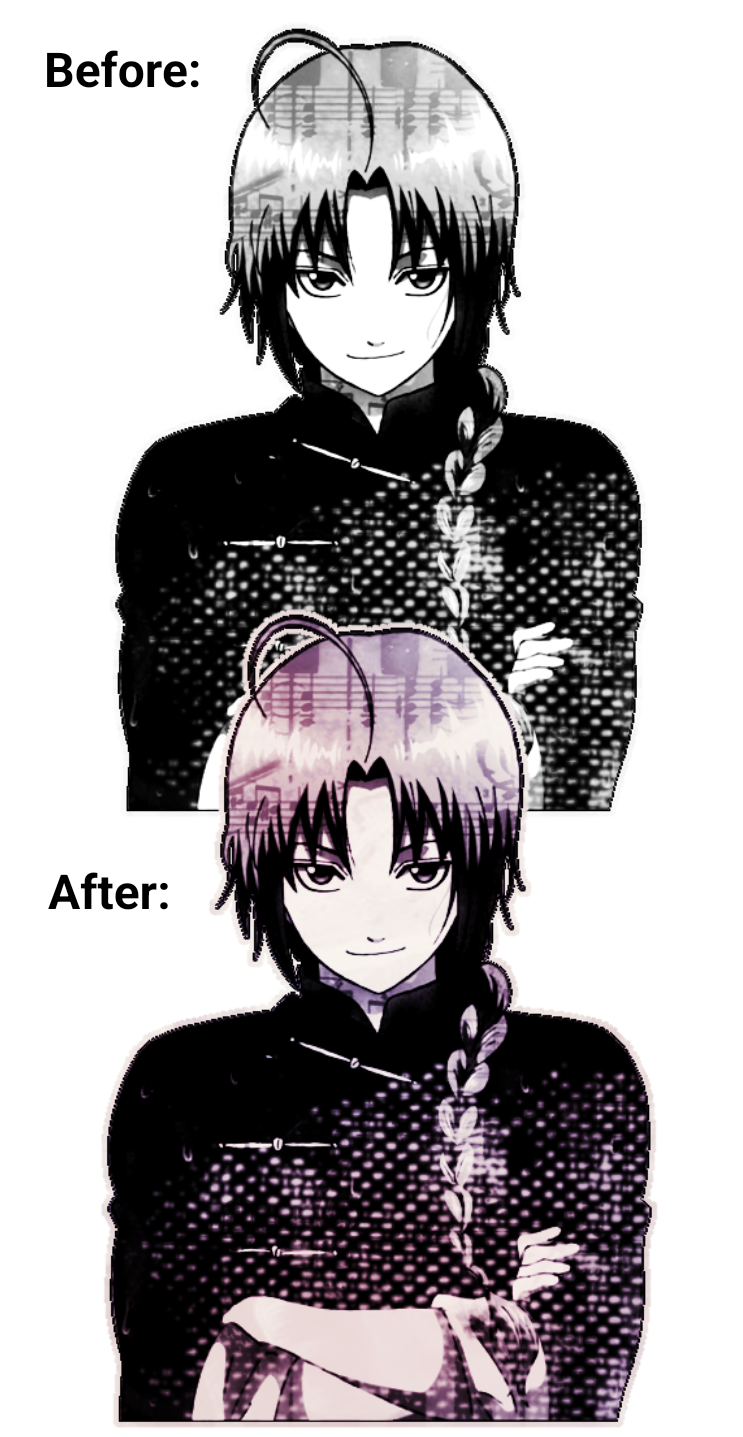
F2U ibis paint coloring from @mer-boy
― It's recommended to put your images in grayscale!
― I used an airbrush for the red layer and applied it to random spots




First image is for the texture if you want it ― the next one besides it is the original ― the last image is for the layer with "linear burn"

#ㅤ𝄢 ﹫ 𝖀ncoffins . 』#ㅤ「 ··· 」 🏐 Mod Hieran#ibispaintx#made in ibis paint#ibis paint coloring#psd coloring#psd#rentry stuff#rentry#rentryblr#editblr#editing resources#rentry resources
940 notes
·
View notes
Text
Intersex Resources: Books, Art, Videos
Here's a list with some resources to learn about intersex community, history, and politics! These include some academic sources and some community sources. I'd love to add sources in other languages and that focus on countries besides the United States, so if anyone has recommendations, please let me know. Continually updating and adding sources.
Reading list:
Intersex History:
"The Intersex Movement of the 1990s: Speaking Out Against Medical and Narrative Violence" by Viola Amato.
Hermaphrodites with Attitude Newsletters.
Jazz Legend Little Jimmy Scott is a Cornerstone of Black Intersex History By Sean Saifa Wall
"Hermaphrodites with Attitude: Mapping the Emergence of Intersex Political Activism" by Cheryl Chase
Chrysalis Quarterly: Intersex Awakening, 1997.
"What Happened at Hopkins: The Creation of the Intersex Management Protocols" by Alison Redick.
Bodies in Doubt: An American History of Intersex by Elizabeth Reis.
Intersex Politics
“A Framework for Intersex Justice.” Intersex Justice Project
"Creating Intersex Justice: Interview with Sean Saifa Wall and Pidgeon Pagonis of the Intersex Justice Project." by David Rubin, Michelle Wolff, and Amanda Lock Swarr.
"Intersex Justice and the Care We Deserve: ‘I Want People to Feel at Home in Their Bodies Again." Zena Sharman.
Critical Intersex edited by Morgan Holmes.
Envisioning African Intersex: Challenging Colonial and Racist Legacies in South African Medicine by Amanda Lock Swarr.
"Intersex Human Rights" by Bauer et al.
Morgan Carpenter's writing
"I Want to Be Like Nature Made Me: Medically Unnecessary Surgeries on Intersex Children in the US." by Human Rights Watch.
Cripping Intersex by Celeste E. Orr.
"From ‘Intersex’ to ‘DSD’: A Case of Epistemic Injustice" by Ten Merrick.
"Did Bioethics Matter? A History of Autonomy, Consent, and Intersex Genital Surgery." by Elizabeth Reis.
Intersex Community
"Normalizing Intersex: Personal Stories from the Pages of Narrative Inquiry in Bioethics." edited by James DuBois and Ana Iltis.
Hans Lindhal's blog.
InterACT Youth Blog.
Intersex Justice Project Blog.
"What it's like to be a Black Intersex Woman" by Tatenda Ngwaru.
Intersex Inclusive Pride Flag by Valentino Vecchietti.
The Interface Project founded by Jim Ambrose.
Intersex Zines from Emi Koyama
Teen Vogue's Intersex Coverage
YOUth& I: An intersex youth Anthology by Intersex Human Rights Australia
Intersex OwnVoices books collected by Bogi Takacs.
Memoirs:
Nobody Needs to Know by Pidgeon Pagonis.
Inverse Cowgirl by Alicia Roth Weigel
XOXY by Kimberly Zieselman
Fiction:
Icarus by K Ancrum.
An Unkindness of Ghosts by Rivers Solomon
Video/Audio
Every Body dir. Julie Cohen.
Hermaphrodites Speak! 1997.
Liberating All Bodies: Disability Justice and Intersex Justice in Conversation.
"36 Revolutions of Change: Sean Saifa Wall."
Inter_View: An Intersex Podcast by Dani Coyle
Hans Lindhal's Youtube channel.
What it's Like to be Intersex from Buzzfeed.
Emilord Youtube channel
I'm intersex-ask me anything from Jubilee
What it's like to be Intersex-Minutes With Roshaante Andersen.
Pass the Mic: Intercepting Injustice with Sean Saifa Wall
Art
"Hey AAP! Get your Scalpels Off Our Bodies!" 1996.
Ana Roxanne's album Because of a Flower.
Intersex 1 in 90 potraits by Lara Aerts and Ernst Coppejans
Anyone can be Born Intersex: A Photo-Portrait Story by Intersex Nigeria.
Pidgeon Pagonis "Too cute to be binary" Collection
Juliana Huxtable Visual Art
Koomah's art
Please feel free to add on your favorite sources for intersex art, history, politics, and community !
#mod e#actuallyintersex#intersex#intersex art#actually intersex#intersex politics#intersex history#intersex resources
1K notes
·
View notes
Text
favourite gale mods

an updated list of my favourite mods for gale specifically, containing general mods, as well as friendship & romance specific mods.

general mods
1 - gale beard fix (obtainable by installing it with the in-game mod manager)


this mod fixes a bug with gale's beard that causes extensive clipping issues, especially when he speaks.
2 - gale earring physics (obtainable by installing it with the in-game mod manager)


adds physics to gale's earrings. it's a small qol mod, but it really makes a difference in cutscenes.
3 - tara joins the camp (obtainable by installing it with the in-game mod manager)




this mod doesn't only allow tara to actually join camp early on, but she also has dialogue with the protag. the mod adds greetings to her, and uses gale's and tara's act 3 dialogue for a more immersive experience.
4 - gale's wizardly updo (obtainable by installing it with the in-game mod manager)


slightly alters gale's existing hairstyle and makes it (imo) make more sense. a longer version is also available from the same author.
5 - re-designed tent for gale (available on nexus)

Gale's attempt to reorganize his tent in a way that reminded him of his comfortable room in Waterdeep.
this mod adds warm lights, potted plants and much more to gale's tent to make it more reminiscent of his home in waterdeep.
another bonus of this mod is that many of gale's scene aren't too dark anymore with the added light sources, especially in act 1 this makes a huge difference. i highly recommend it.
6 - delfinition's armors (available on nexus)

adds a really nice armour variant to gale.

friendship & romance mods
1 - hug your companions - in-dialogue hug interactions (available on nexus)





this mod allows you to hug gale (as well as all other companions). it's available for all body types and is triggered by in-game dialogue. gale has a voiceline after you request a hug and after the hug itself.
2 - kisses mod (available on nexus)


allows you to use various kiss animations for gale.

i hope this was helpful to someone! 🖤
#gale dekarios#gale of waterdeep#gale x tav#tav x gale#galetav#baldur's gate 3#bg3#baldurs gate 3#mod recs#ch: gale dekarios#vg: baldur's gate 3#series: baldur's gate#misc: reference#misc: resources
607 notes
·
View notes
Text
Does the dog die has a filter/tag for fat jokes
I wasn't sure how many people knew this so thank you to the hard working crew at DTDD and the community that helps them.
6K notes
·
View notes
Text
i was extremely sleep deprived yesterday when i discovered the dragon survival mod which was LIFE CHANGING when you're on three hours of sleep so of course i made a whole custom forest dragon texture in one day about it. and. just for fun, some concept art i made for it:
#aka i was too tired to trust myself to speak coherently with clients or make commission work up to my standards. but i need to be productive#or ill die#my art#minecraft#mineblr#dragon#dragonsona#of sorts#forest dragon#earth dragon#lush cave#mods in the video tht are noticable btw: complimentary reimagined shaders. alex's mobs. ambient sounds 5. mizuno 16 craft resource pack.#and a really cool seed i found online :]#video#NOT my model but im going to tag it as#my model#since it's 3D work!! actual model made by blackaures who made the mod and also some SICK ass dragon art#also. patreon gets to see the other 3 pages of concept art i made for this later today! :] wink wink nudge. coughs#sorry i need to shill#um. anyways#no name for this dragon yet. i do know it steals livestock from too-small village/illager pens#to give them enriched lives in its expansive cave farm#i'd like to come back to this eventually and touch up the wing design since the glowing spots didnt really shake out
3K notes
·
View notes
Text
actually, i should just say this in its own post--if you're ever looking for a translation of anything ancient greek, ian johnston has a ton of translations that are both genuinely good and completely free to read. a lot of the time free translations are really old or just not that good but this man has translated, like, everything from homer to sophocles to kafka to nietzche and he's done it extremely well. i didn't think he had an antigone but i just looked and not only does he have one but it's genuinely very good. so i highly recommend his website as a resource!
#mod felix#resources#another one for the resources post when i finally make it#i have a draft saved but it's very half-baked
3K notes
·
View notes
Text



♪(^∇^*) K-Angel Rentry Graphics! Requested by anon. Reblog & Credit to use!
#★ : mod rin#nso#needy streamer overload#needy streamer overdose#nso kangel#k angel#omgkawaiiangel#kangel#needy girl overdose#needy girl overload#kangel icons#kangel graphics#kangel layouts#nso icons#nso layouts#rentry resources#rentry#rentry graphics
3K notes
·
View notes
Text

🖤MIDNIGHT ELEGANCE DRESS BD1356
📌 Set Features:
10 Color Options
For Female; Adult-Elder-Teen-Young Adult
New Mesh and Custom Thumbnail
Compatible with HQ mod
---
📥 Download:
Dress
---
🎉 I hope you'll love this set! Don't forget to share your thoughts with us! 🎉
🌟 Join us on Patreon for more exclusive CC and early access: Patreon Link 🌟
---
#the sims#the sims 4#sims#sims 4#ts4#the sims cc#sims cc#sims 4 cc#the sims gameplay#the sims 4 custom content#sims 4 mod#sims 4 clothing#sims 4 fashion#ts4 cc find#the sims 4 mods#sims community#simslife#sims 4 download#sims custom content#sims alpha#sims 4 alpha#maxis match#sims 4 gameplay#sims legacy#sims lookbook#busra-tr#patreon#the sims resource#simblr
539 notes
·
View notes
Text




╰┈❥ Sun & Moon Graphics !! ♡₊˚⊹
𖦹 ---- requested by an anon ! ⸜(。˃ ᵕ ˂ )⸝ 𖦹 ---- free to use with credit ! ꒷꒦⋆⑅

#🩷🍬 mod emu!#boygirl edits#boygirl graphics#graphics#rentry#rentry resources#rentry graphics#sun fnaf#moon fnaf#fnaf security breach
748 notes
·
View notes
Text

Top 15 MUST HAVE Self-Care Mods for Realistic Gameplay | The Sims 4
Hi everyone! Here is a list of 15 must-have self-care mods for realistic gameplay in The Sims 4. I showcased each of the mods mentioned below. You can watch it here. ♡
Water Your Plants by Ilexsims
Sleep N*ked by Alainbm_mods
Functional Perfume by Ilexsims
Functional Tissue Box by Ilexsims
Functional Bath Towels by Ilexsims
Face Masks from Mirror by Ilexsims
Change into Robe by Ellesimsworld
Sleepover Skincare Pack by Alinnse
Shadow Work Journal by Kikovanity
Self Manicure and Pedicure by Cepzid
Breast Cancer Awareness by Turbodriver
Change Into Towel After Shower by Tyjokr
Functional Lush Face Masks by Playwithsyd
Functional Wine Bottle by Somik and Severinka
Bathroom Clutter Kit Becomes Functional by Cepzid
Thank you to the creators! ♡
#the sims 4#ts4#sims 4#the sims 4 mods#sims 4 mods#the sims 4 custom content#sims 4 custom content#ts4 custom content#ts4 mods#sims 4 overrides#the sims 4 overrides#ts4 overrides#ts4 default replacement#ts4 resources#sims 4 cc#the sims mods#simblr#the sims community#bougiechloe#sims 4 gameplay#sims 4 youtube#sims 4 lp#the sims 4 cc#the sims#ts4 cc#ts4 simblr#ts4 gameplay#sims community#show us your sims#ts4mm
1K notes
·
View notes
Text
Write more Deaf characters!
[Large Text: Write more Deaf characters!]
When answering questions about deaf and hard of hearing characters, I have noticed they are overwhelmingly about:
A character who is deaf in one ear or hard of hearing because of an accident
A character who was born deaf and knows sign language, but seems to have 0 connection to the broader Deaf community
This is not the experience of most d/Deaf people! So, here's your primer to Deaf community and culture, and writing a Deaf character, because they are sorely underrepresented.
(Disclaimer: this post was written using viewpoints I, a singular Deaf person in the United States, have encountered. I tried to make this as general as possible to encompass many Deaf views, but it is possible that I have misconstrued something. Do not take this guide as the be-all and end-all of your knowledge on Deaf culture. Keep reading and researching the Deaf community, and explore viewpoints from many different Deaf people of all backgrounds.)
Why do you write Deaf with capital D?
[Large Text: Why do you write Deaf with capital D?]
The term "deaf" with the lowercase d means not being able to hear. The term "Deaf" with an uppercase D refers to the cultural identity formed by deaf people. This identity is difficult to explain but it includes knowing sign language and engaging with other Deaf people.
There are varying opinions within the Deaf community on who is allowed to call themselves culturally Deaf. Some Deaf believe that only those who were born into the Deaf community (whose family is Deaf, who attended a Deaf school, and/or who have sign language as a first language) are allowed to consider themselves culturally Deaf. On the 'flip' side, some Deaf believe that anyone with hearing loss can claim the label. And of course, you can find someone Deaf with any opinion in between.
This is all intracommunity nuance. If your character is born deaf and learns sign language at a young age or as a first language, they are likely culturally Deaf.
Sign Language Use
[Large Text: Sign Language Use]
Sign languages are the language of Deaf communities. (Note that there are many sign languages in different regions, and they are not related in the same way spoken languages are!)
Most sign languages did not originate alongside spoken language, either, so they usually have different grammar than the spoken language in a region. This means that someone whose first language is sign may have difficulty learning even the written version of the spoken language due to the different grammar and translation. For native signers, the spoken language of their area is their second language.
Sign languages are fully developed languages, with grammar and structure. Sign language is not "less" than spoken language, and encouraging sign language does not discourage speech. (Even if it did, that's not a bad thing! Sign languages are still a valid and rich communication form!) Sign languages have slang and expressions/idioms too.
Sign languages typically have a "manual alphabet" otherwise known as "fingerspelling". This is a way to represent words that don't have a sign. Fluent signers very rarely fingerspell; normally fingerspelling is for proper nouns which don't have a name sign.
Name signs are the last big point I want to cover about sign language. A name sign is a way to refer to someone so you don't have to spell their name every time. It's usually related to someone's attributes, like dimples or a specific way of moving. Sign names can only be given by Deaf people who are fluent in sign language.
Deaf Education
[Large Text: Deaf Education]
For a long time, deaf people were considered unable to learn, just because they couldn't hear. And since 1880, for about 100 years and even still today, the prevailing tradition in deaf education was/is oralism--a teaching method based on speech that rejects sign language.
Historically speaking, if deaf children were to receive an education, they would be sent to a Deaf residential school. These still exist, although there are also many Deaf schools that are typical day schools, just for d/Deaf/hoh students.
Deaf children may also attend "mainstream" schools; they might have sign language interpreters and other accessibility accommodations, or they may be forced to rely on lipreading and context, or placed in special education where their needs often still are not met.
Oralism still has lasting effects today. Deaf people have received, and still do receive, worse education than hearing people.
One common problem is language deprivation. Many deaf children grow up without access to sign language. About 90% of deaf people are born to hearing parents; even if hearing parents do send their deaf kids to a Deaf school, they may not learn sign language themselves, so the child must rely on what they can gather of spoken language at home. Sign language is even discouraged by some audiologists and speech professionals, because it "might interfere with speech". But by depriving deaf children of sign language, more often than not, they are being deprived of all language.
People who are born deaf do not learn spoken language naturally, even when provided with aids like hearing aids and cochlear implants. Many deaf kids who learn speech learn it through extensive speech therapy, and often have a "deaf accent" from copying mouth shapes but not being able to hear or process what sounds they are making, which may also include having an atypically pitched voice (e.g., very high-pitched). Lip-reading is inaccurate and the best lip-readers can only follow about 30% of a conversation, and that's by intently watching with no breaks.
It is possible to learn a language at any age. But it is easiest to pick up a new language when one is young. Children who do not learn a first language by around age 5--the age at which they would start school--have more difficulty learning any language, and may have frequent outbursts or trouble expressing emotions as a result of communication difficulties.
Another problem, especially within the Deaf community, is literacy. Spoken languages are often unrelated to the signed language of the same region. Learning to read and write, as a Deaf child, is like learning a whole new separate language, with different grammar and structure than their native language. This is why captions are not a perfect accessibility tool--it is, for many Deaf people, being offered an alternative in their second language, if they have learned to read and write at all.
Deaf Culture Norms
[Large Text: Deaf Culture Norms]
To hearing people, Deaf conversation can seem very blunt and to the point. This isn't to say Deaf people are inexpressive--quite the opposite: sign languages often use facial expressions as part of the grammar, and there is a lot of expression that can be incorporated into a sign--but there isn't a lot of "talking around" things. You can see part of this culture in name signs, which are usually based off a trait of the person. It's not offensive--it's just how they're recognized!
Another conception is of Deaf people being over expressive, but again, that is just part of sign language grammar. Face and body movements take the place of tone of voice, as well as other grammatical clarifications.
Deaf people talk a lot! It's very hard to end a conversation, because there will always be something else to say or a new person to meet. Hugging and other physical touch are really common greetings.
Tapping people on the shoulder to get their attention is fine. Other ways include flicking the lights or rattling a surface (for vibrations). Eye contact while signing is also important to make known that you are listening. Groups of Deaf people will sit in a circle so everyone can see everyone else. It's rude to talk in a Deaf space. If you are lost in the conversation, you'd ask if you can write or type instead.
Deaf Space also refers to design concepts that are more accessible to deaf people. This includes good lighting, minimal signing-height visual obstacles (e.g., low waist-height shelves), visual indicators instead of bells, open spaces so people can sit in a circle to talk, and automatic doors and wide hallways/passages so it is easier to continue a conversation while walking.
It's also very rude to comment on a Deaf person's voice. Do not mention you're surprised they can speak. Do not call their accent "cute" or "weird" or anything like that. Do not ask them to speak. Do not say their voice sounds really good ("for a deaf person") or that you wouldn't be able to tell they are deaf.
Deaf Views on Deafness
[Large Text: Deaf Views on Deafness]
The Deaf community is incredibly proud of their Deafness. You'll often hear the phrases "hearing loss = deaf gain" or "failing a hearing test" as "passing the deaf test". Continuing the Deaf community and culture is highly valued, and learning sign language is encouraged for everyone.
Many people in the Deaf community dislike cochlear implants as their success is incredibly variable and they require invasive surgery and therapies from a young age. Another big argument against CI is that they are often presented as the only or the first option to hearing parents, who misunderstand CI as a "cure" and then do not give their child access to sign language.
Deaf people also reject any sort of cure for deafness, especially genetic therapies. Many Deaf people do not think of their Deafness as a disability.
(Deaf people will often point out the advantages of Deaf culture and sign language, such as being able to talk over long distances, through windows, and even underwater.)
Most hard of hearing and some deaf people have hearing aids, although it is really an individual choice whether or not to wear them. Many d/Deaf/hoh people are overwhelmed and startled very easily by noise (since they're not used to that much auditory input) and get tinnitus from auditory overstimulation. They may also struggle with auditory processing--locating sounds, interpreting sounds, recognizing and interpreting speech, and other issues.
The Deaf community doesn't have any general complaints about hearing aids, just many prefer not to wear them. Do know that they are an imperfect aid; they just amplify sound, which doesn't improve processing or understanding, and it doesn't make people hearing. Not everyone even benefits from hearing aids--their specific hearing levels may make hearing aids a bad choice of aid.
A big point you'll hear in Deaf spaces is Deaf Can (and Deaf Power). Hearing people have historically treated deafness as a sign of incapability, but Deaf people can do everything hearing people can--except hear.
Myth Busting
[Large Text: Myth Busting]
Myth #1: All Deaf people are completely deaf. This is very far from the truth! Most deaf people have some degree of residual hearing, although this may require very loud sounds and/or at very specific pitches. Plus, there are many culturally Deaf people who are not deaf/hoh at all--CODAs, hearing children born to Deaf parents, are part of the Deaf community.
Myth #2: (Non-speaking) Deaf people do not make noise. Also very far from the truth! First off, Deaf people laugh. Many Deaf people also vocalize without knowing or intending, especially when excited. We can get very loud!
Myth #3: (Speaking) Deaf people talk loudly. While this can be true, often d/Deaf people talk more quietly than expected. This is because with severe to profound levels of deafness, no speaking volume is really going to be audible, so they will often rely on feeling vibrations in their throat to know if they're making noise. Vibrations are detectable at lower volumes than hearing people like to listen to.
Myth #4: Deaf people can't drive. I actually have no idea where this one came from but it's false. Deaf people can absolutely drive, and tend to have a lower rate of accidents and violations than hearing drivers. There is a common trend of treating d/Deaf people like they can't do things unrelated to hearing, but deafness on its own only affects hearing.
Deaf Struggles in the Hearing World
[Large Text: Deaf Struggles in the Hearing World]
A huge problem is just basic accessibility. Many places do not have captions or visual indicators, or rely on hearing (like drive-throughs). Movie open caption screenings are often at awkward times, and caption glasses are hard to find or access and awkward to wear.
Deaf people are also at increased risk of police violence. Police often treat signing as aggression, rather than attempts to communicate. When they yell, talk quickly, or shine a flashlight in Deaf people's faces, it's even harder to understand what is going on. Deaf people are also not often provided with a qualified interpreter and may not understand what is going on or why they were arrested.
Deaf people, specifically those who are mainly kept in the hearing world, have higher rates of drug use and addiction.
Hearing people also treat Deaf people as incapable or lesser. Gallaudet University had only hearing presidents until 1988 after the Deaf President Now protests; then-chair of the board at GU said in a statement that received heavy backlash from the students, "deaf people cannot function in the hearing world".
When writing your Deaf character:
[Large Text: When writing your Deaf Character:]
Were they born to hearing parents or to Deaf parents? (90% of deaf children are born to hearing parents.) Is anyone else in the family d/Deaf?
At what age was their deafness noticed? (It can be at birth, or it can take several years, even for children born deaf.) Is their hearing loss progressive? Is their hearing loss significantly different in each ear?
Were they eligible for cochlear implants? Did they get CI? Did they get hearing aids? (Consider cost as a factor: CI requires the surgery as well as intensive speech therapy; hearing aids are also expensive and can need replacement and refitting.) How well do the aids work for them? Do they have them in one or both ears?
What advice did their family receive from audiologists and speech therapists about sign language and communication, and did their family listen? Did they learn sign language? At what age? Did their parents and family learn sign language? Are they language-deprived? Did they go through speech therapy? What is their speech like? Do they like using their voice?
Did or do they attend Deaf school? Is it residential or day school? If it's residential, did they understand what was happening when they were dropped off? Does the school use sign language or rely on oralism? (Consider time period; most schools now use sign language, but from 1880-about 1980 the predominant method was oralism.)
If they don't attend a Deaf school, what accommodations are they receiving in mainstream setting? Are they in special education? Are they in a Deaf program at a mainstream school? Do they have an interpreter? How much do they understand what is going on in class?
How involved are they in Deaf community and culture? Are their friends and family involved and supportive of the Deaf community? Do they treat deafness like something to cure? Do their friends and family frequently ignore or "forget" that they are deaf?
In general, consider their scenario, what ableism they've faced, and what their Deaf identity is.
Happy writing, and please continue to send in your questions!
Mod Rock
#mod rock#writing guide#writing resources#deaf character#cultural deafness#sign language representation#long post
2K notes
·
View notes
Text






Templates of my old replycons
like/rb + credit if using or reposting. do not claim as your own

#ㅤ𝄢 ﹫ 𝖀ncoffins . 』#ㅤ「 ··· 」 🏐 mod hieran#editblr#editing resources#rentry#rentry resources#rentry stuff#rentryblr#rentry dividers#rentry graphics#rentry template#replycons#replycon#replycon templates#transparent png#png#random pngs#transparent pngs#pngs
428 notes
·
View notes